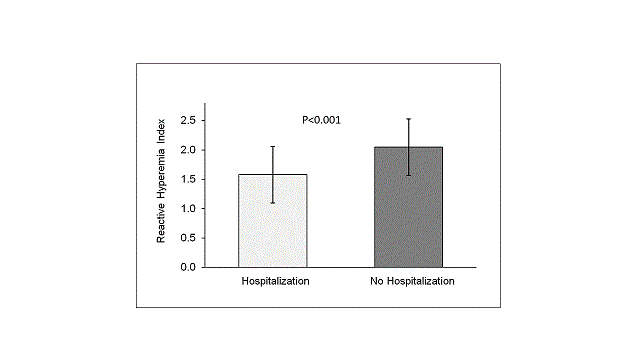
Peripheral Endothelial Function Predicts 1-Year Adverse Clinical Outcome in Patients with Chest Pain Hospitalized in the Emergency Department
Background: Endothelial function is a marker for cardiovascular risk. Thus, abnormal endothelial function may be associated with adverse 1-year outcome in patients presenting to the emergency department chest pain unit (CPU).
Methods: Non-invasive endothelial function testing, was performed in 2 centers in 394 consecutive subjects with chest pain and no history of coronary artery disease (CAD) presenting to CPU,
Results: Mean 10-year Framingham risk score (FRS) was 6.6±6.0%, median reactive hyperemia index (RHI) as a measure of endothelial function 1.98 and mean was 2.0±0.5. During a 1-year follow-up, the 38 (9.6%) patients who developed major adverse cardiovascular end-points (MACE), including all-cause mortality, non-fatal myocardial infarction, hospitalization for heart failure or angina pectoris, stroke, coronary artery bypass grafting and percutaneous coronary interventions, had higher 10-year FRS (9.8±8.4% vs 6.4±5.7%; p=0.014) and lower baseline RHI (1.58±0.48 vs 2.05±0.48; p<0.001) (Figure) compared to those without MACE. RHI ≤ the median was associated with higher 1-year MACE (17% vs 3%, p<0.001) compared to RHI > the median. Multivariate analysis demonstrated that RHI ≤ the median was an independent predictor of 1-year MACE (unadjusted OR 7.64, 95% CI 2.91-20.02; p<0.001; age and gender adjusted OR 6.48, 95% CI 2.44-17.19; p<0.001; multivariate adjusted OR 8.64, 95% CI 2.88-25.90; p<0.001).
Conclusions: Our findings suggest that non-invasive endothelial function testing may have clinical utility in triaging patients in the CPU and in predicting 1-year MACE.

Powered by Eventact EMS